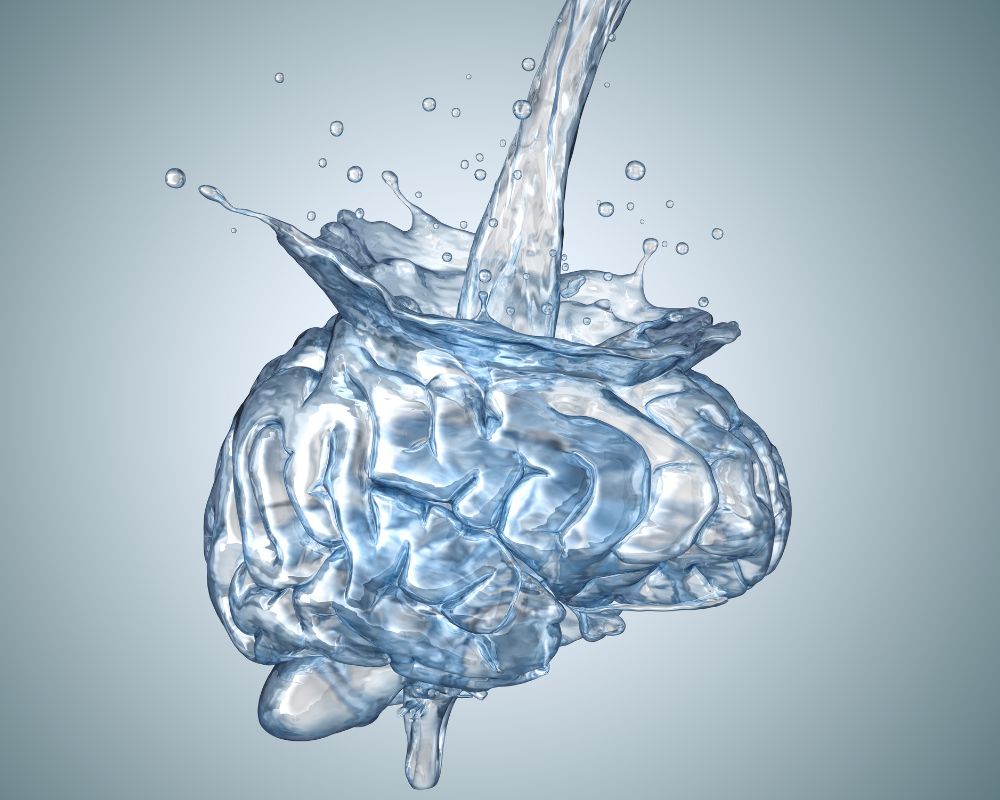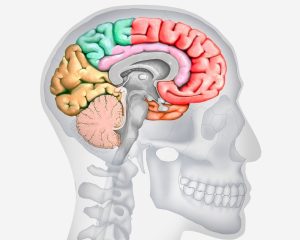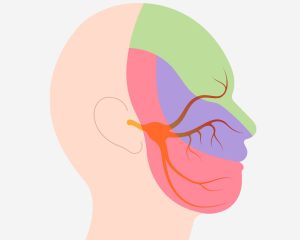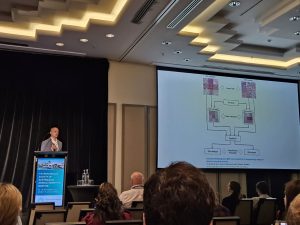Hydrocephalus comes from two Greek words meaning ‘water’ and ‘head’. It’s a bit of a misnomer though for the condition actually involves too much cerebrospinal fluid (CSF) in the brain.
Like other chronic conditions, hydrocephalus is usually controlled rather than cured. Early treatment enables many adults with hydrocephalus to lead normal lives with few limitations.
CSF: A delicately balanced system
Your body constantly produces CSF, circulates it around your brain and spinal cord and then reabsorbs it into your bloodstream. It makes precise calculations about the exact amount of CSF you need – usually about a pint a day for adults (or around 570ml).
It:
- Is a shock absorber for the brain and spinal cord
- Delivers nutrients to the brain and removes waste
- Flows between the cranium and spine to regulate changes in brain pressure.
Injury or illness may disrupt this delicately balanced system. Hydrocephalus occurs when too much CSF builds up in the fluid spaces in the brain. CSF can accumulate due to:
- Increased CSF production
- Decreased CSF absorption
- Blockage in the flow of CSF through the ventricular system.
Adults have rigid skulls, which can’t expand to make space for excess fluid. As a result, brain pressure increases and brain tissue is stretched, triggering symptoms.
Symptoms of hydrocephalus in adults
- Headaches
- Nausea
- Irritability
- Drowsiness
- Seizures
- An unsteady walk or gait
- Weakness in the legs
- Falls
- Changes in personality or behaviour.
Causes of adult hydrocephalus
Adult-onset hydrocephalus may occur as a result of:
- Head injury
- Haemorrhage
- Meningitis or similar diseases.
- A brain tumour
Types of adult-onset hydrocephalus
Clinicians divide hydrocephalus into different categories based on how it started, the presence of structural defects and whether CSF pressure is high or normal.
| Type | Characteristics or causes |
| Congenital hydrocephalus | Present from birth but may not cause symptoms until adulthood. |
| Acquired hydrocephalus | Injury or disease. |
| Communicating hydrocephalus | Inadequate CSF absorption Abnormal increase in CSF production. |
| Obstructive hydrocephalus | Blockage of CSF flow along one or more of the passages connecting the ventricles. |
| Normal pressure hydrocephalus | Gradual blockage of CSF-draining pathways but CSF pressure remains normal. Common in over-60s. |
| Hydrocephalus ex-vacuo | Brain tissue shrinks due to degenerative disease (Alzheimer’s), stroke or trauma |
Normal pressure hydrocephalus and behaviour change
Brain tissue can be damaged by the build-up of excess CSF in the ventricles.
Many of the symptoms of normal pressure hydrocephalus (NPH) mimic those of other conditions or are mistaken as a part of the ageing process since most patients are seniors.
In the early stages, NPH may cause a disturbed, shuffling gait and frequent falls. As the condition progresses, a patient may experience urinary incontinence and dementia.
Personality changes due to NPH may include:
- Losing interest in daily activities
- Forgetfulness
- Short-term memory loss
- Difficulties with routine daily tasks.
Those behaviour changes understandably concern patients and families. But they (and sometimes their doctors) are likely to think about Alzheimer’s disease, Parkinson’s disease or other neurodegenerative conditions before considering hydrocephalus.
As a result, it’s estimated that only about 20% of NPH patients receive a correct diagnosis. Yet, NPH is one of the few underlying causes of dementia that can sometimes be controlled or reversed with the right treatment.
Treating hydrocephalus
Treatment for hydrocephalus depends on its type and the symptoms caused. Treatment options include:
- Medication to reduce CSF production
- Endoscopic third ventriculostomy – a procedure that opens up new pathways for CSF to leave the brain
- Ventriculoperitoneal shunt – a procedure that allows CSF to drain from your brain to your abdomen.
With treatment, the main symptoms of NPH may improve. Studies show that:
- Gait issues improve in about 85% of treated patients
- Urinary incontinence improves in about 80% of cases treated early and 50-60% of patients treated in later stages
- Cognitive difficulties improve in about 80% of treated patients.
As with many other conditions, early detection can improve treatment outcomes.
How can we help?
Macquarie Neurosurgery and Spine’s highly trained neurosurgeons have extensive expertise in managing all neurosurgical conditions including hydrocephalus.
Our specialist team also holds regular multi-disciplinary (MDT) meetings for complex cases, where various specialists discuss your needs to ensure all possible alternatives regarding treatment are considered. And our location within Macquarie University Hospital gives us access to the latest medical technology to diagnose your condition and manage your treatment.
If you think we could help you, please make an appointment enquiry today.
Disclaimer
All information is general and is not intended to be a substitute for professional medical advice. Macquarie Neurosurgery and Spine can consult with you to confirm if a particular treatment or procedure is right for you.
References
- American Association of Neurosurgeons, Adult-onset hydrocephalus, https://www.aans.org/Patients/Neurosurgical-Conditions-and-Treatments/Adult-Onset-Hydrocephalus#, [Accessed 6 December 2023]
- Alzheimer’s Association, Normal pressure hydrocephalus, https://www.alz.org/alzheimers-dementia/what-is-dementia/types-of-dementia/normal-pressure-hydrocephalus, [Accessed 6 December 2023]
- Cleveland Clinic, Normal pressure hydrocephalus, https://www.alz.org/alzheimers-dementia/what-is-dementia/types-of-dementia/normal-pressure-hydrocephalus, [Accessed 6 December 2023]
- Kambara, A et al, Front. Aging Neurosci., 20 January 2021, Sec. Neurocognitive Aging and Behavior, Volume 12 – 2020 | Long-Term Prognosis of Cognitive Function in Patients With Idiopathic Normal Pressure Hydrocephalus After Shunt Surgery, https://doi.org/10.3389/fnagi.2020.617150, [Accessed 6 December 2023]








